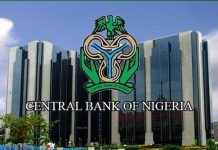The sterling weakened on Friday as investors took profits after a stellar rally this week that set the currency up for its biggest weekly gain against the euro in more than a year on growing confidence that a no-deal Brexit can be avoided.
Data showing that British shoppers cut back on spending in the three months to December was broadly in line with market expectations and sparked just a brief rise in sterling.
The bigger focus for sterling traders remained Brexit, especially after a tumultuous week in which British Prime Minister Theresa May’s Brexit deal suffered a heavy defeat in parliament on Tuesday but won a subsequent vote of confidence.
This week’s developments appear to have boosted a perception in markets that Britain will be able to avoid crashing out of the EU without a deal, boosting the pound.
The currency has risen about 1.3 percent against the euro this week, set for its biggest weekly gain since November 2017.
“Sterling has rallied quite a bit over the past week-and-a-half and the weakness today is a bit of check on those gains and a bit of profit-taking,” said Tapas Strickland, a market strategist at National Australia Bank in London.
“The market is pricing out the risk of hard Brexit and some kind of agreement… so against this background, you’d expect sterling to grind higher above $1.30.”
At 1220 GMT, the pound was down 0.4 percent at $1.2936, having touched $1.30 on Thursday.
Against the euro, sterling tumbled 0.5 percent to 88.13 pence and below two-month peaks hit a day earlier at around 87.65 pence.
On Friday, prominent Brexit campaigner Nigel Farage said the United Kingdom is likely to delay Brexit and another referendum is possible so opponents of EU membership need to organize.
May is due to hold a series of meetings with some of her top ministers on Friday to discuss the way forward on Brexit after her deal with Brussels was rejected by parliament, her spokeswoman said.
“It is our understanding that markets, and I think rightly, see the risk of no-deal Brexit as having receded substantially,” said Ross Hutchison, rates portfolio manager at Aberdeen Standard Investments.
“And the move in gilts and sterling reflects this.”
Britain’s 10-year government bond or gilt yield rose to 1.376 percent, its highest level in more than six weeks.














